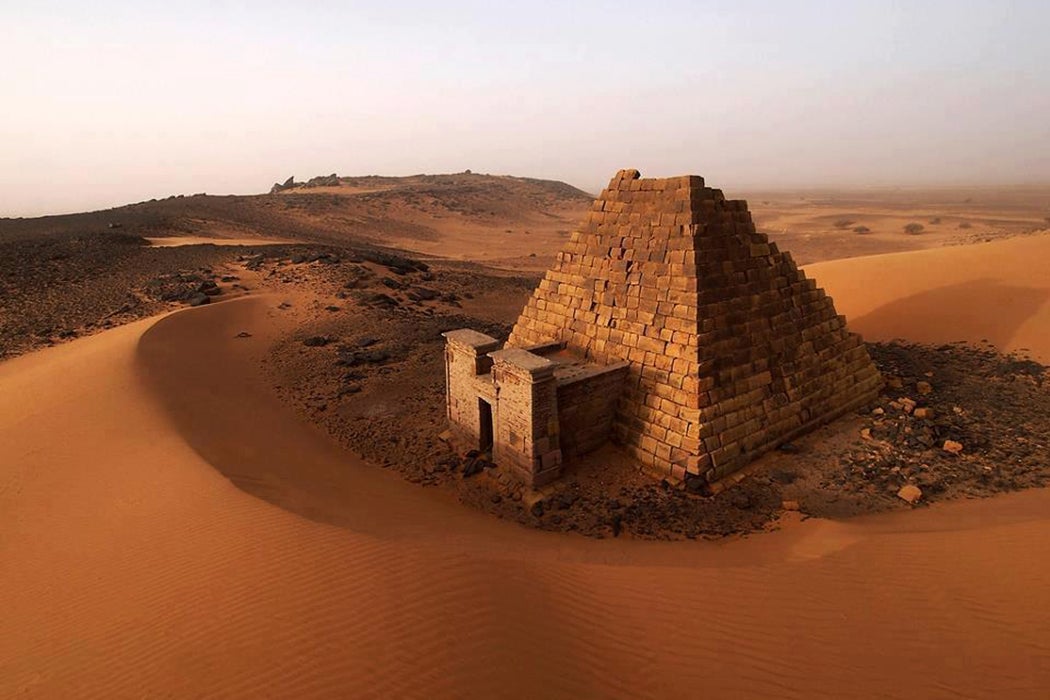On the dusty banks of the Nile River in northern Sudan, archaeologists digging in the “city of the dead” at Sedeinga recently found a huge trove of stone inscriptions in Meroitic, the earliest known written language of Sub-Saharan Africa. Examples of Meroitic are relatively rare, so the find represents a great new opportunity for linguistic study. A handful of archaeological sites and the written language are all that remains of the Kingdom of Kush, located in what is now Sudan.
According to archaeologist David Edwards, writing in The Journal of African History and Annual Review of Anthropology, Kush is often overlooked due to the many Egyptian influences on its culture, up to and including pyramids. (Some might remember Kush from beloved children’s author John Bellairs, whose “cursed blue figurine” was a Kushite statue.) The Kingdom of Kush was based first at the city of Napata and later Meroe, home of the Meroitic language. At its height, Kush spanned more than a thousand kilometers from northern Sudan to the Blue Nile Region, and lasted for more than a thousand years.
The origins of Kush are murky. It was well established as a society before significant contact with the Egyptians, but seems to have developed differently from its northern neighbor. For ecological reasons it is unlikely that Kush built its society through agricultural surplus as Egypt seems to have. Instead, Edwards believes the state and its power structure arose through trade and projection of military power. Kushite use of horses and ample open territory facilitated the movement of goods and soldiers around the region. Trade with Egypt was particularly important, but goods and fancy commodities were exchanged as far away as modern day Morocco and maybe Europe as well as points south. The lack of more basic imported goods suggests that Kushite trade was centered on luxuries. What was unattainable through trade might have been obtained through force.
Want more stories like this? Sign up for our weekly newsletter.
Kush had a robust infrastructure. Enormous water storage tanks (Hafirs) with associated temples and deep wells can be found throughout their territory. The scale of these projects suggests state involvement with agriculture—one water tank required excavating up to 200,000 cubic meters of earth. Mere maintenance of these massive structures would have required considerable resources. The Kushites also had robust production facilities for iron and pottery. Edwards believes that the Kushite state built these facilities as a means of control over the population, backed up by the threat of force.
Kushite burials were often pretty grand. Some items found in high-end burials include imported luxuries such as silver and bronze items, jewelry, fancy ceramics, glass, lamps, furniture, and wine.
Much of the archaeology in the region has focused on the large burial centers, especially the pyramids, so Kush remains mysterious in many ways. Edwards notes that for uncertain reasons, the state collapsed around the 4th century CE, and its unique language disappeared not long after that. But not, it seems, completely.







